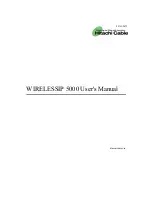
Safety, Regulatory, & Legal
•
When using the mobile phone next to your body (other than in your hand or against your
head), maintain a distance of 1.5 cm (3/4 inch) from your body to be consistent with how
the mobile phone is tested for compliance with RF exposure requirements.
•
If you use your mobile phone with a non-Motorola accessory case or holder, make sure
the accessory maintains the required separation distance and has no metallic parts.
World Health Organization (WHO) Advice
Organizations such as the World Health Organization and the US Food and Drug
Administration have stated that if people are concerned and want to reduce their exposure
they could use a handsfree device to keep the phone away from the head and body during
phone calls, or reduce the amount of time spent on the phone.
Note:
Motorola includes this guidance as a precaution, per the requirements of the
Government of India. The scientific consensus is that there are no known RF health effects
from the use of mobile phones.
Follow Instructions to Avoid Interference Problems
Turn off your mobile device in any location where posted notices instruct you to do so, such
as hospitals or health care facilities.
In an aircraft, turn off your mobile device whenever instructed to do so by airline staff. If your
mobile device offers an airplane mode or similar feature, consult airline staff about using it in
flight.
Medical Devices
If you use an implantable pacemaker or defibrillator, or other medical device, consult your
healthcare provider and the device manufacturer’s directions before using this mobile
device.
Persons with a pacemaker or defibrillator should observe the following precautions:
•
ALWAYS keep the mobile device more than 20 centimeters (8 inches) from the
pacemaker or defibrillator when the mobile device is turned ON.
•
Use the ear opposite the pacemaker or defibrillator to minimize the potential for
interference.
•
Turn OFF the mobile device immediately if you have any reason to suspect that
interference is taking place.
Regulatory Information
Regulatory Information
Your Motorola mobile device is designed to comply with national and international
regulatory requirements. For full compliance statements and details, please refer to the
regulatory information in your printed product guide.
Specific Absorption Rate (FCC & IC)
SAR (FCC & IC)
YOUR MOBILE DEVICE MEETS FCC AND IC LIMITS FOR EXPOSURE TO
RADIO WAVES.
Your mobile device is a radio transmitter and receiver. It is designed not to exceed the limits
for exposure to radio waves (radio frequency electromagnetic fields) adopted by the Federal
Communications Commission (FCC) and Industry Canada (IC). These limits include a
substantial safety margin designed to assure the safety of all persons, regardless of age
and health.
The radio wave exposure guidelines use a unit of measurement known as the Specific
Absorption Rate, or SAR. The SAR limit for mobile devices is 1.6 W/kg.
Tests for SAR are conducted using standard operating positions with the device transmitting
at its highest certified power level in all tested frequency bands. The highest SAR values
under the FCC and IC guidelines for your device model are listed below:
During use, the actual SAR values for your device are usually well below the values stated.
This is because, for purposes of system efficiency and to minimize interference on the
network, the operating power of your mobile device is automatically decreased when full
power is not needed for the call. The lower the power output of the device, the lower its SAR
value.
If you are interested in further reducing your RF exposure then you can easily do so by
limiting your usage or simply using a hands-free kit to keep the device away from the head
and body.
Additional information can be found at
www.motorola.com/rfhealth
.
Head SAR
2.4 GHz
WiFi, Bluetooth
0.89
W/kg
Body-worn SAR
GSM 850
, WiFi, Bluetooth
0.26
W/kg
Safety, Regulatory, & Legal
For Your Safety
Battery Use & Safety
Battery Charging
Driving Precautions
Seizures, Blackouts & Eyestrain
High Volume
Children
Glass Parts
Glass Parts
Use & Care
Operational Warnings
RF Energy
Regulatory Information
EU Conformance
FCC Notice
Industry Canada Notice
Software Notices
Location
Navigation
Privacy & Data Security
Recycling
Hearing Aid Compatibility
Software Copyright
Content Copyright
OSS Information
Export Law
Service & Repairs
Global Warranty
Copyright & Trademarks
24 NOV 2014







































